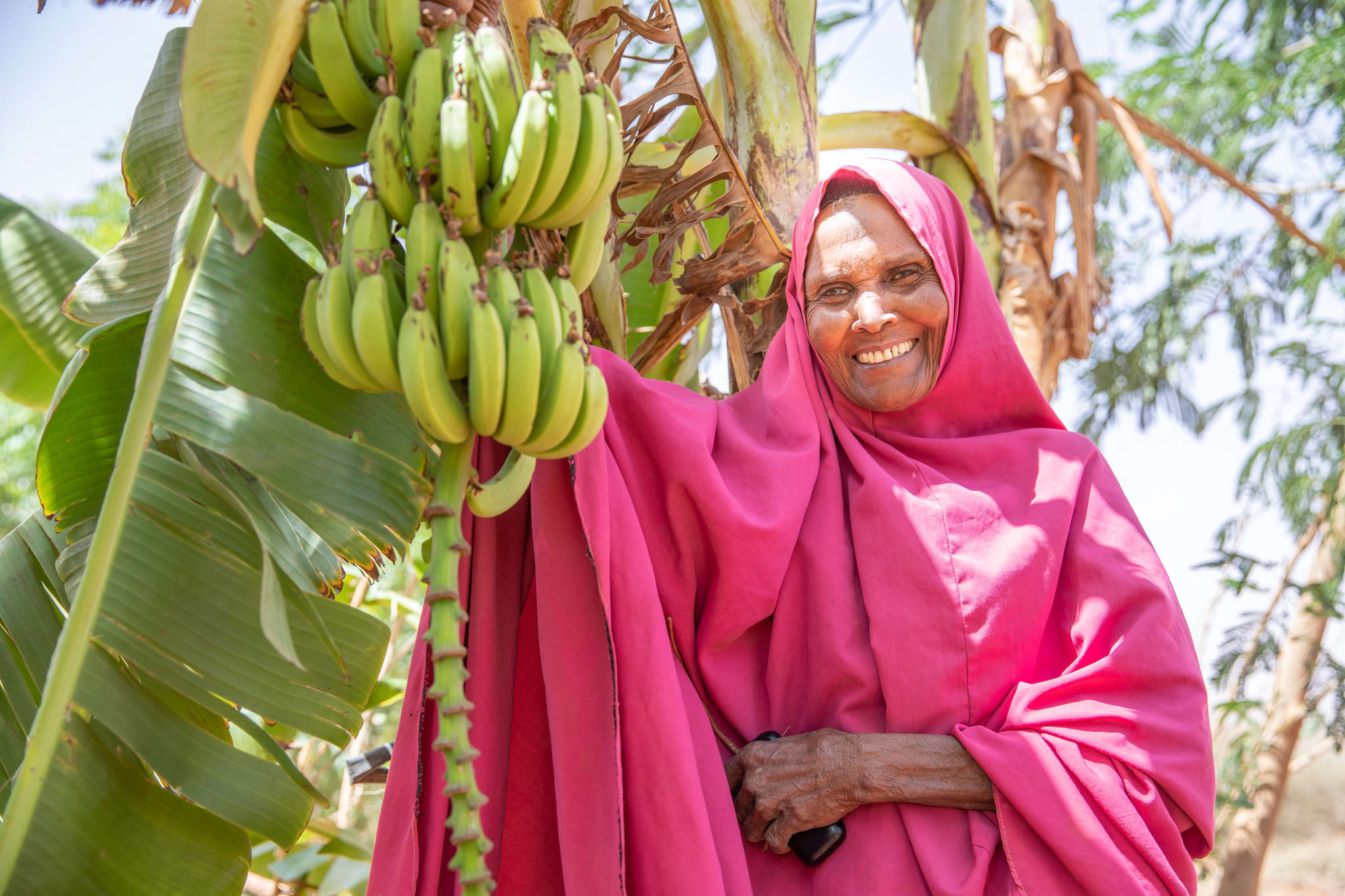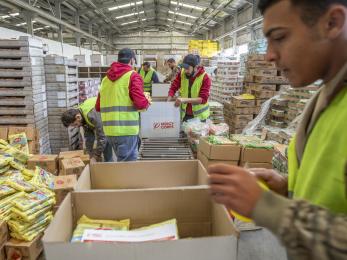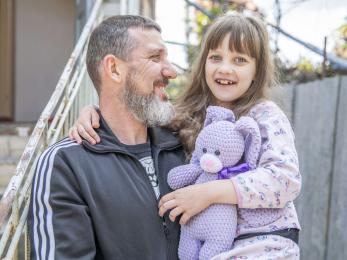The facts: Indonesia earthquakes, tsunamis and other natural disasters
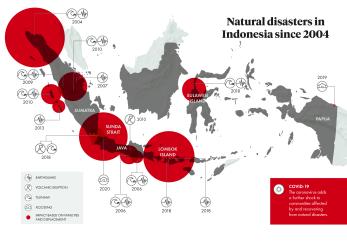
Indonesia, which is the world's largest island country and located between the Indian and the Pacific Ocean, regularly faces the hardship of many natural disasters, including earthquakes, tsunamis, and volcanic eruptions.
On average, at least one major natural disaster has occurred in Indonesia every month since the 2004 tsunami, including earthquakes, tsunamis, volcanic eruptions and events caused by climate change.
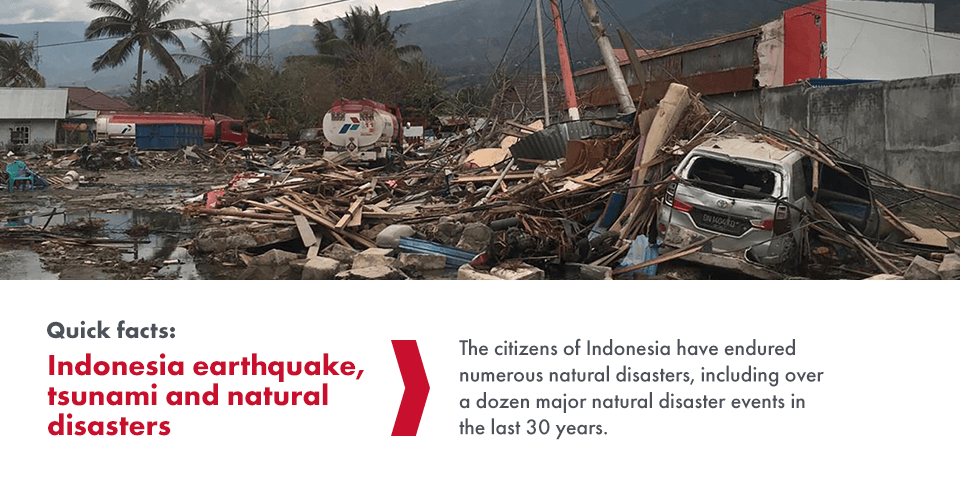
Indonesia has coped with the challenges of natural disasters for hundreds of years, with recorded earthquakes and volcanic eruptions dating back to the 13th Century. Even just from 1990 to present, the citizens of Indonesia have endured numerous natural disasters, including over a dozen major natural disaster events in the last 30 years.
- Latest emergency: Flash flooding, Janurary 2020
- How to aid Indonesia tsunami and earthquake relief efforts
- History of major Indonesian earthquakes, tsunamis and other natural disasters since 1990
- What are the biggest needs after a natural disaster?
- How can I help victims in the Indonesia tsunami and earthquake?
Latest emergency: Flash flooding, January 2020

Region Affected: Java
Date: January 1, 2020
Event type: Flooding
Displaced: 398,000
Heavy rainfall more than three times the average inundated rivers in three of the island’s western provinces, causing flash floods that swept through communities, wiping away infrastructure, homes and belongings and sending people fleeing. At least 501,500 people were affected — nearly 398,000 of whom were displaced — with more believed to be unaccounted for.
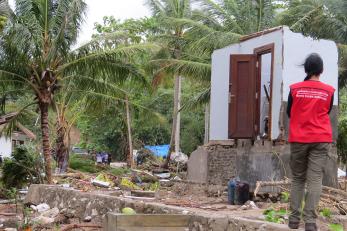
How to aid Indonesia tsunami and earthquake relief efforts
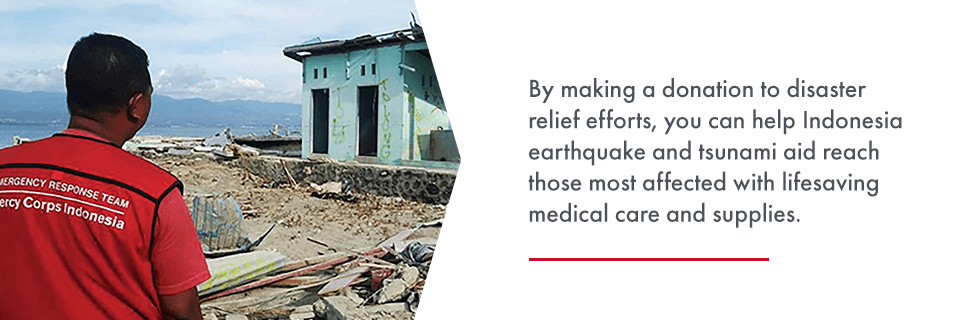
As countries and NGOs seek to respond to the immediate needs of survivors, support is needed to fund these relief efforts. By making a donation to disaster relief efforts, you can help Indonesia tsunami aid reach those most affected with life-saving medical care and supplies. Every gift allows us to better respond to the needs of all people recovering from these natural disasters.
History of major Indonesian earthquakes, tsunamis and other natural disasters since 2004
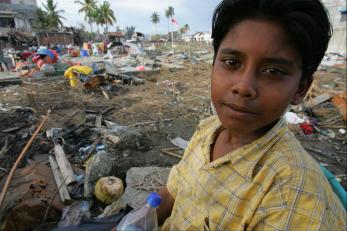
Because of its geographic location along the Pacific Ring of Fire, Indonesia has suffered from hundreds of natural disasters including earthquakes, tsunamis, volcanic eruptions and floods. Earthquakes with a magnitude of 5.0 or lower occur almost daily in Indonesia, while more major earthquakes have occurred about once a year throughout the nation's history. These earthquakes often trigger tsunamis or floods that devastate communities.
The island nation has 136 volcanoes — 61 of which have erupted since 1900 — that are continuously monitored by the country's Centre of Volcanology and Geological Hazard Mitigation. Indonesia must remain in a constant state of natural disaster preparedness, as the country sometimes experiences multiple disasters in a single year. The infrastructure and economy of Indonesia also suffer ongoing impacts from its long history of major natural disasters.
Below are the most severe natural disasters the country has faced since 2004.
Earthquake and tsunami December 26, 2004
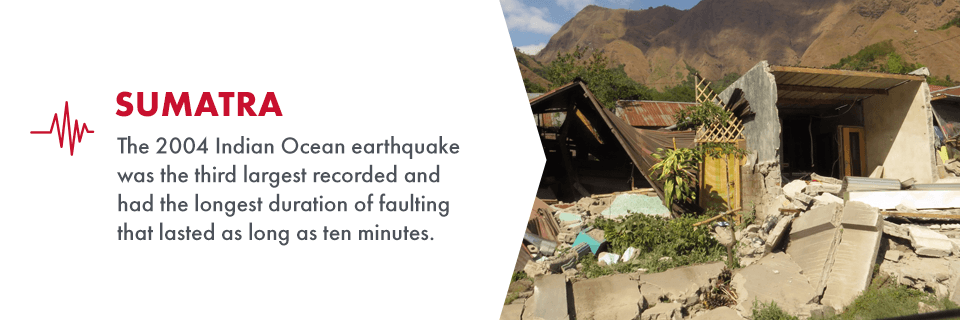
Region Affected: Sumatra-Andaman
Date: December 26, 2004
Event type: Earthquake and Tsunami
Fatalities: 165,945
Summary of event: In December 2004, the largest magnitude earthquake in Indonesia's history struck off the west coast of northern Sumatra along the fault line between the Indian Plate and the Burma Plate. Its magnitude was between 9.1 and 9.3 and it reached a IX on the Mercalli intensity scale, which measures the intensity of an earthquake based on observed effects. Globally, the 2004 Indian Ocean earthquake was the third largest recorded and had the longest duration of faulting, which lasted as long as ten minutes.
This massive earthquake triggered a series of tsunamis, later called the Boxing Day tsunamis, that struck the coast of Indonesia and several other countries with coastlines along the Indian Ocean. The province of Aceh in Sumatra was hit by the largest tsunami, with waves growing as high as 30 metres. Fourteen countries were affected by the earthquake and tsunami, which is referred to as the Sumatra–Andaman earthquake, and subsequent earthquakes were triggered as far away as Alaska. The Sumatra–Andaman earthquake caused more than 227,000 deaths in total, and over 165,000 in Indonesia, making it the second deadliest natural disaster that has occurred in the 21st century, after the 2010 earthquake in Haiti. Following this disaster, humanitarian organisations and countries around the world responded with aid amounting to more than £10.5 billion.
Earthquake March 28, 2005
Region Affected: Sumatra
Date: March 28, 2005
Event type: Earthquake
Fatalities: 1,313
Summary of event: Less than a year after the deadly Sumatra–Andaman earthquake, another major earthquake struck in the same region off the coast of Sumatra. Called the Nias–Simeulue, the earthquake that occurred on March 28 had a magnitude of 8.6, making it the third most powerful earthquake in Indonesia since 1965. Over 1,300 people were killed, and an additional 340 were injured, with the island of Nias experiencing the most fatalities and physical damage. Following the mainshock were several large aftershocks ranging from 5.5 and 6.0 in magnitude. Because the region was still recovering from the massive 2004 earthquake and tsunami, many people feared the Nias–Simeulue earthquake would trigger a similar tsunami and some fled to higher ground. Fortunately, the earthquake triggered only small waves as high as 3 metres that caused minimal damage to coastal communities.
Earthquake and tsunami May 26, 2006
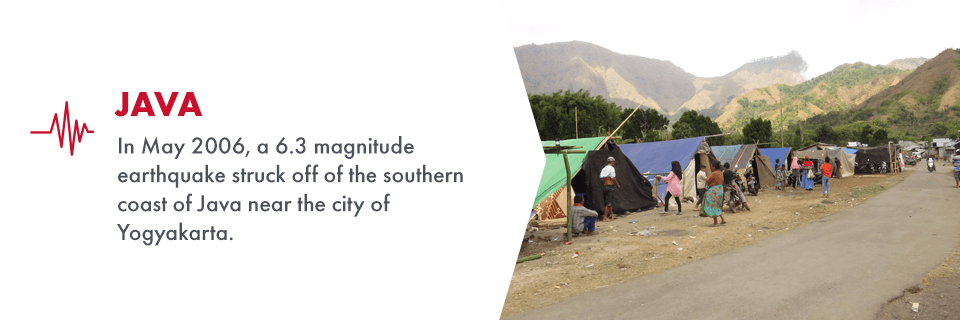
Region Affected: Java
Date: May 26, 2006
Event type: Earthquake and Tsunami
Fatalities: 5,749
Summary of event: In May 2006, a 6.3 magnitude earthquake struck off of the southern coast of Java near the city of Yogyakarta. While this earthquake had a lower magnitude than others the country had experienced in the past, it was given an IX rating on the Mercalli intensity scale due to the high number of casualties and extreme damage it caused. The earthquake caused over 5,700 casualties and left more than 38,500 people injured. The disproportionate amount of damage caused by this earthquake was due in part to the proximity to Mount Merapi, an active volcano. Volcanic eruptions from Mount Merapi had built up volcanic debris, which then intensified the vibrations from the earthquake and caused soil liquefaction.
Earthquake and tsunami July 17, 2006
Region Affected: Java
Date: July 17, 2006
Event type: Earthquake and Tsunami
Fatalities: 802
Summary of event: A 7.7 magnitude earthquake occurred in Indonesia off the coast of west and central Java. While the earthquake itself caused no direct damage, it triggered a regional tsunami that flooded about 300 kilometres of coastline and took more than 800 lives. Because the earthquake caused only moderate shocks, there was very little warning before the tsunami struck, and many people at the shore were never informed of the approaching wave. The tsunami, which had waves between 5 and 7 metres high in most affected regions, left over 9,000 people injured.
Earthquake March 6, 2007
Region Affected: Sumatra
Date: March 6, 2007
Event type: Earthquake
Fatalities: 68
Summary of event: On March 6, 2007, Sumatra was struck by two earthquakes back-to-back, which is a phenomenon called an earthquake doublet. The first 6.4 magnitude earthquake struck just two hours before the second 6.3 magnitude earthquake, both of which occurred near the northern end of Lake Singkarak. The rupture from the first earthquake likely increased the stress around the basin under the lake, causing a second rupture further north on the same fault segment. Together these earthquakes caused more than 60 fatalities and 460 injuries and were felt on the neighboring islands of Singapore and Malaysia.
Earthquake and tsunami September 30, 2009
Region Affected: Sumatra
Date: September 30, 2009
Event type: Earthquake and Tsunami
Fatalities: 1,117
Summary of event: At the end of September 2009, a 7.6 magnitude earthquake struck Indonesia off the shore of Sumatra near the town of Padang, killing 1,117 people and leaving 1,214 injured. The powerful shock — rated IX on the Mercalli intensity scale — destroyed buildings, caused landslides and triggered a local tsunami that struck the city of Padang. Hundreds of thousands of people were left without power and forced to relocate. A second, but unrelated, 6.6 magnitude earthquake occurred the following morning less than 1,000 kilometers south of the first earthquake. While this earthquake caused only three casualties, it added an estimated £7.6 million in damages to the existing £1.6 billion in damage in the region.
Earthquake and tsunami October 25, 2010
Region Affected: Sumatra
Date: October 25, 2010
Event type: Earthquake and Tsunami
Fatalities: 408
Summary of event: A 7.8 magnitude earthquake struck off the western coast of Sumatra in October 2010 along the same fault line where the 2004 Indian Ocean earthquake occurred. The earthquake triggered a local tsunami as high as seven metres that crashed onto the shores of the Mentawai Islands. Called the 2010 Mentawai earthquake, this earthquake and tsunami caused over 400 fatalities and displaced more than 20,000 people. Many other people continued to be missing, and it is likely they were swept out to sea as the tsunami waves receded.
Volcanic Eruption November 3, 2010
Region Affected: Java
Date: November 3, 2010
Event type: Volcanic Eruption
Fatalities: 353
Summary of event: In November 2010, Mount Merapi on the island of Java erupted in a violent and explosive event. Mount Merapi has historically been the most active volcano in Indonesia, and its name translates literally to "Fire Mountain" in Indonesian and Javanese. Since 1990, Mount Merapi has erupted more than 80 times. The Indonesian government issued an evacuation alert before the eruption in November 2010, which lasted five days. The eruption led to over 350 casualties, and many other people who remained in the affected area suffered from severe burns.
Earthquake July 2, 2013
Region Affected: Sumatra
Date: July 2, 2013
Event type: Earthquake
Fatalities: 43
Summary of event: In July 2013, a 6.2 magnitude earthquake hit off the northern coast of Sumatra. At least 43 people were killed, and over 2,500 more were injured in the province of Aceh. Over 50,000 Indonesians were displaced as more than 20,000 buildings were damaged or destroyed. The earthquake also triggered landslides that damaged roads and delayed humanitarian aid to several villages.
Earthquake December 7, 2016
Region Affected: Sumatra
Date: December 7, 2016
Event type: Earthquake
Fatalities: 104
Summary of event: A magnitude 6.5 earthquake struck the Aceh region of Sumatra in 2016, causing heavy damage and over 100 casualties. Over 850 people were injured, and damage to infrastructure amounted to around £177 million. More than 18,700 homes were damaged as well as more than 160 shops, 60 mosques, 16 schools and 50 bridges.
Earthquake August 5, 2018
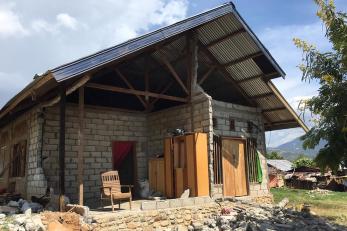
Region Affected: Lombok
Date: August 5, 2018
Event type: Earthquake
Fatalities: 563
Summary of event: In early August 2018, a 6.9 magnitude earthquake struck the Indonesian island of Lombok, killing over 500 people and displacing more than 417,000 others. The earthquake hit near Loloan Village, but shaking was felt throughout the entire island. Following the initial shock were more than 1,000 aftershocks. The earthquake's rupture spread from its inland epicentre towards the sea, causing small tsunamis. This earthquake is the deadliest and strongest earthquake to hit the island of Lombok in recorded history.
Earthquake August 19, 2018
Region Affected: Lombok
Date: August 19, 2018
Event type: Earthquake
Fatalities: 12
Summary of event: Just two weeks after the August 5 earthquake in Lombok, the island was racked with two more earthquakes on August 19. The first 6.3 magnitude earthquake caused two casualties, while the second stronger 6.9 magnitude earthquake brought the death toll to 12. These earthquakes were the final two of a total of five major earthquakes that occurred in Lombok that year, with magnitudes ranging from 5.9 to 6.9.
Earthquake and tsunami September 28, 2018
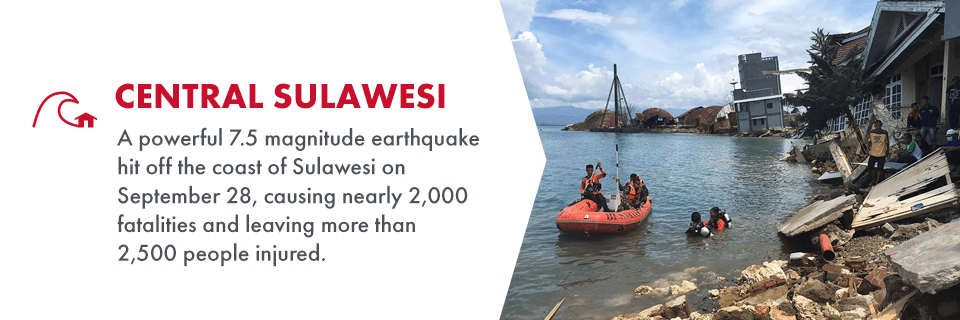
Region Affected: central Sulawesi
Date: September 28, 2018
Event type: Earthquake
Fatalities: 1,948
Summary of event: A powerful 7.5 magnitude earthquake hit off the coast of Sulawesi on September 28, causing nearly 2,000 fatalities and leaving more than 2,500 people injured. The vibrations from the earthquake caused soil liquefaction that destroyed hundreds of homes and swept victims away in rivers of flowing soil. The earthquake triggered a tsunami that gained speed and height as it traveled through Palu bay before striking the city of Palu. Many Indonesians in the tsunami's path did not receive an evacuation notice until it was too late. Tens of thousands of survivors in the region were displaced.
Earthquake and tsunami December 22, 2018
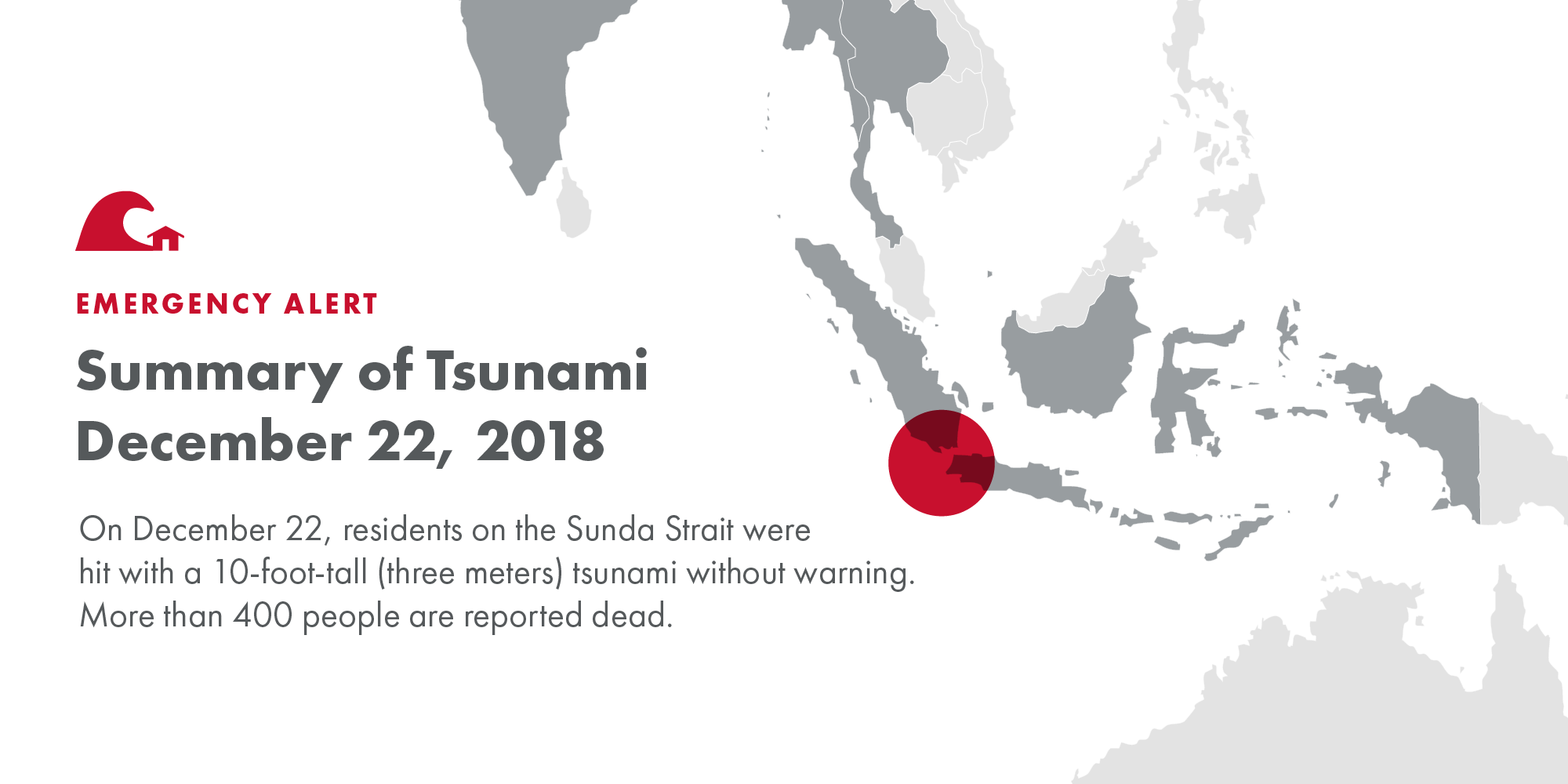
In Indonesia's second deadly tsunami of 2018, residents on the Sunda Strait were hit with a 10-foot-tall (three metres) tsunami without warning. More than 400 people are reported dead.
As disaster response teams search for survivors, the death toll continues to rise and hundreds remain missing, trapped or displaced.
Nearly 22,000 people were evacuated or displaced and many are in need of food, water and basic healthcare. Being the rainy season in Indonesia, floods of more than six feet (two metres) sent even more people fleeing from their homes, further complicating the response.
Flash floods and landslides March 16, 2019
Region Affected: Papua
Date: March 16, 2019
Event type: Flooding
Fatalities: 113
Following torrential rains, a flash flood struck the area of Jayapura in the province of Papua. A separate landslide consequently occurred in the city of Jayapura several hours later. Together, the two events led to approximately 113 deaths.
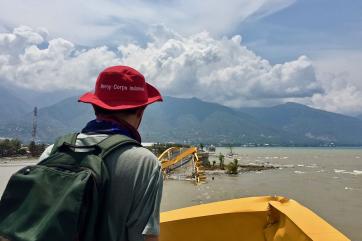
What are the biggest needs after a natural disaster?
Following a natural disaster, the most immediate concern is to fill the basic and urgent needs of survivors. This includes food, water, shelter and basic healthcare. Large natural disasters can leave hundreds of thousands of people without adequate nourishment, protection or medical care for those injured. Humanitarian aid for natural disasters should first focus on quickly reaching those most affected with these essential supplies and services for survival.
In the first days following a natural disaster, rescue efforts are also a high priority. Volunteers and first responders search for survivors in the aftermath of the disaster to save as many trapped or injured people as possible and prevent the death toll from rising.
Whenever possible, these immediate needs of survivors should be met in a way that lays a strong foundation for the long-term recovery of the afflicted communities. Humanitarian aid organisations like Mercy Corps can help rebuild the local economy by providing cash to survivors instead of physical goods to support small businesses. In regions physically devastated by disasters, aid organisations can help farmers and business owners get back on their feet and assist in repairing infrastructure.
How can I help victims in the Indonesia tsunami and earthquake?
Damage to roads and infrastructure following the September 2018 tsunami and earthquake in Indonesia has delayed humanitarian aid and prevented essential supplies from reaching some affected communities. Tensions in Palu and the surrounding area are high as food, fuel and water are in short supply. Support from aid organisations, countries and individuals is essential to provide the necessary resources and supplies to survivors and help rebuild the infrastructure in Sulawesi. Here are some valuable ways to provide life-saving aid to victims of the Indonesia tsunami and earthquake:
Short-term help:
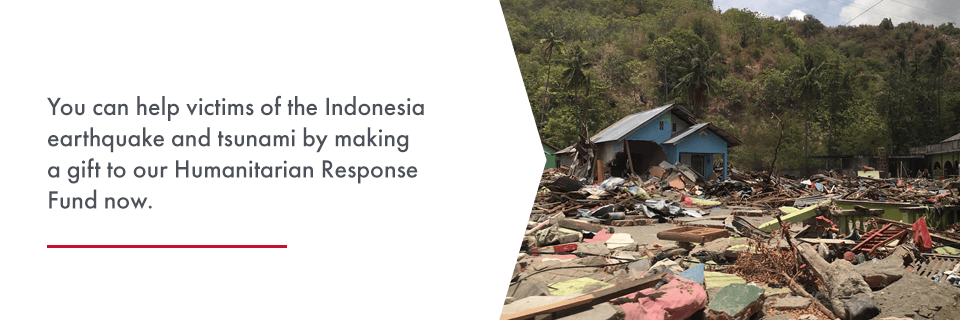
Without support and resources, the immediate needs of survivors of the Indonesia tsunami and earthquake cannot be met. Humanitarian aid organisations on the ground in Sulawesi are in need of food, water and medical supplies to feed and care for victims. Financial and physical donations of any size will help relief efforts to reach those most in need.
The Mercy Corps Indonesia Response Team has been serving in Indonesia for twenty years and is familiar with the needs of this frequently disaster-stricken country. Our team on the ground is currently providing basic hygiene kits to survivors in the Palu area. However, Indonesia earthquake relief efforts are challenged by fuel shortages and damaged roads. The Mercy Corps team supports a thorough humanitarian assessment and is working with local officials in the region to better reach those most-affected.
You can help victims of the Indonesia earthquake and tsunami by making a gift to our Humanitarian Response Fund now. Your donation will support our team as we respond to the critical situation in Sulawesi, as well as crises and natural disasters around the world.
Long-term help:
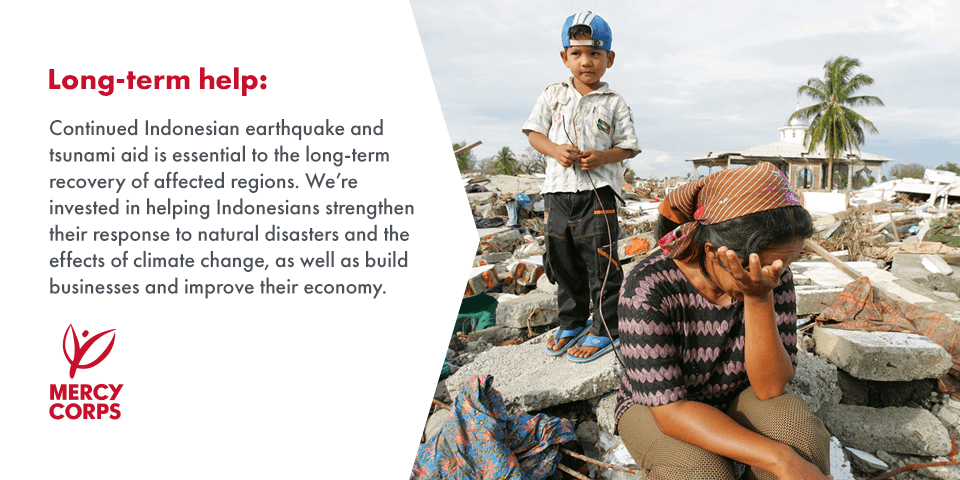
As Indonesia recovers from the devastation of the September 2018 earthquake and tsunami, aid efforts must shift toward rebuilding the country's infrastructure and increasing the effectiveness of disaster preparedness. Extensive damage to homes, businesses, roads and communication systems means millions of dollars in damage across the region. Lack of running water and electricity can lead to further problems with sanitation, spreading disease and leading to more fatalities. While the country is still recovering from three earthquakes in Lombok earlier this year, continued Indonesian earthquake and tsunami aid is essential to the long-term recovery of affected regions.
Looking forward, continued relief efforts should assist the Indonesian government in repairing infrastructure and rebuilding their disaster preparedness systems. Because of Indonesia's geographic location, the region will continue to experience frequent natural disasters, including tsunamis, earthquakes and volcanic eruptions. However, with effective disaster preparedness efforts in place, many more casualties can be prevented and the country will be more resilient when natural disasters strike.
At Mercy Corps, we’re invested in helping Indonesians strengthen their response to natural disasters and the effects of climate change, as well as build businesses and improve their economy.
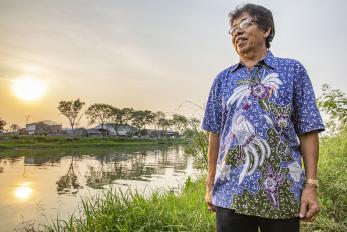
Semarang in Central Java — with a population of over 1.5 million people — is a coastal community crisscrossed by 21 rivers, making it particularly vulnerable to floods. We’re enhancing flood resilience of downstream communities by working on flood prevention and resilience measures upstream, including tree planting, dry well construction, and bioswales (landscaping areas). More than 160,800 people living in Semarang will see a decrease in annual flood damage as a result of this work.
We’re also working with farmers to help them improve their yields and adapt to the effects of rainier rainy seasons and drier dry seasons. By 2050, total rainfall in Indonesia is expected to increase on average by nearly 10 percent from April through June, but decrease by 10 to 25 percent from July through September. To ensure that they have income and enough to eat, farmers are developing more sustainable practices, attending financial literacy trainings, and saving some of their profits to buy better equipment — with support from our programmes.
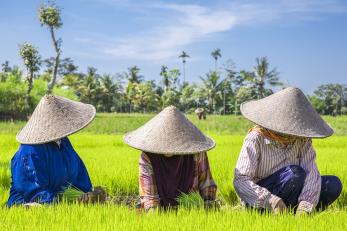
Before, during, and after emergencies, Mercy Corps is there to help people build stronger communities and brighter futures. Living in a precariously situated archipelago nation, Indonesians are people accustomed to adapting and changing. Together, we ensure that they’re ready for whatever is next.
